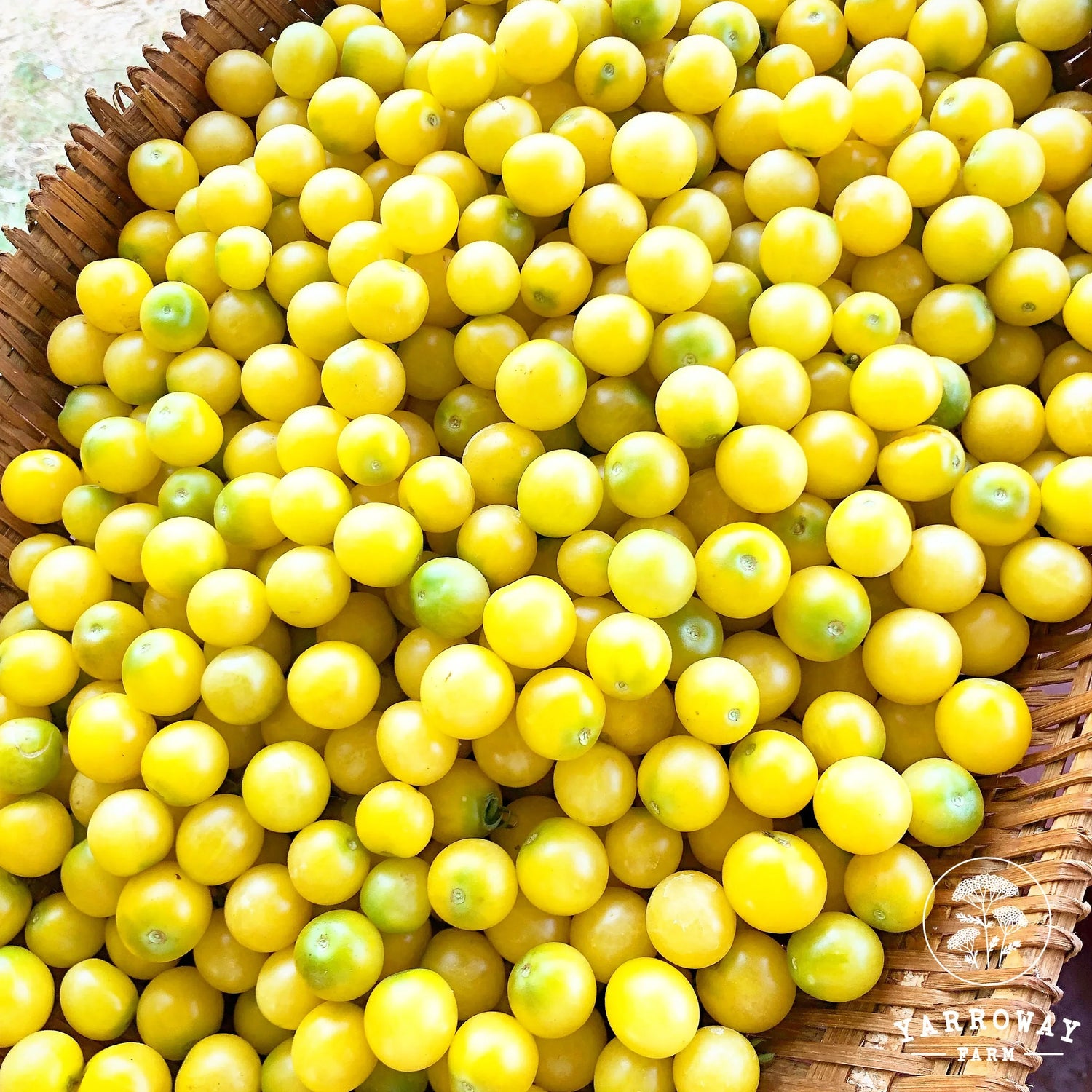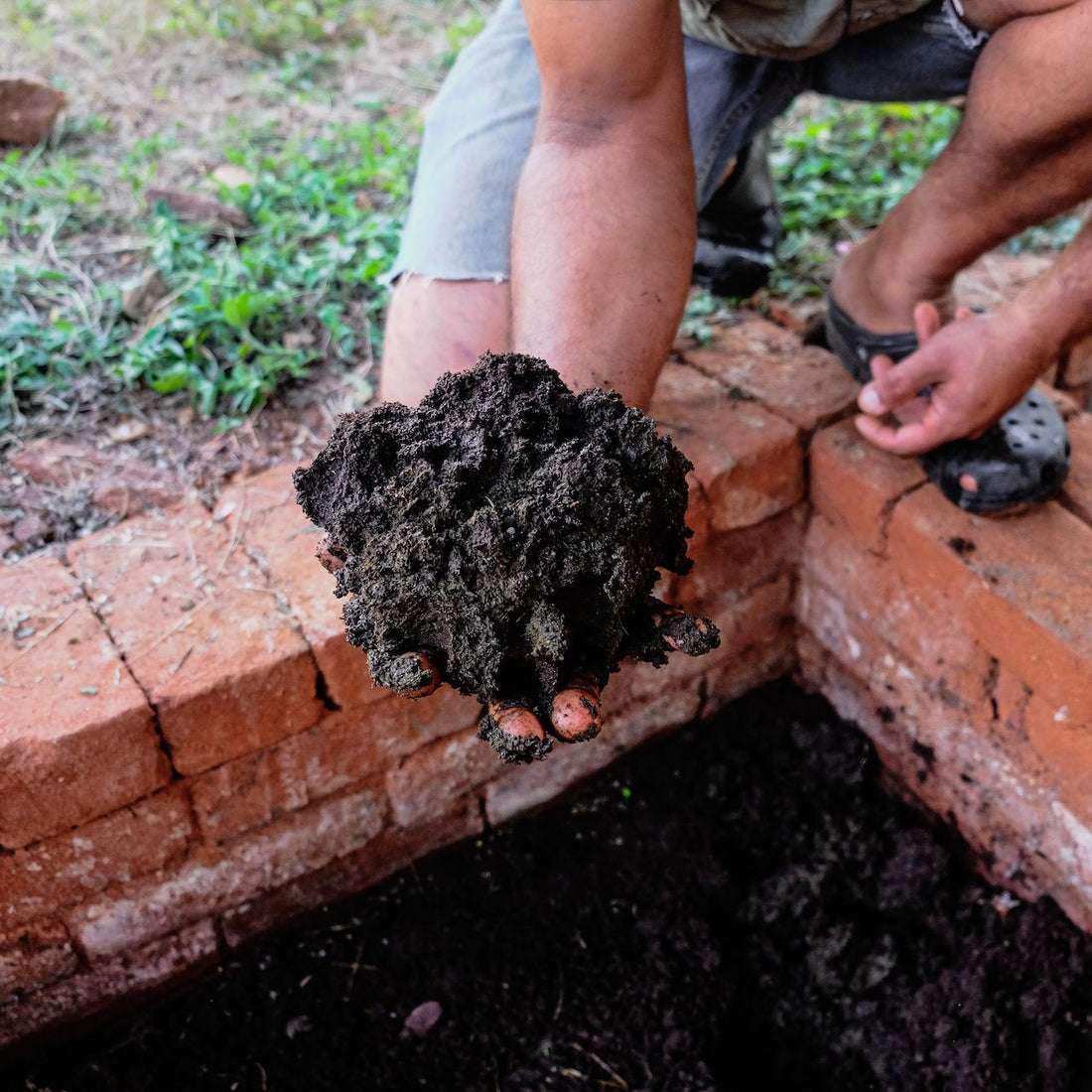There are books that have been written and can be written on this subject. What we are trying to do here is simplifying the topic and giving you some basics, so you can kick start the process of bringing your soil to optimum to grow food.
Soil in its natural state is never meant to grow intense vegetables. No forests or wild places grow edible plants in such close proximity with each other. What humanity created centuries ago was a form of agriculture, which pretty much controlled and tamed the soil to grow what they want to get the ideal possible output they need. No, I’m not talking about the so-called “conventional” agricultural practices (which only started in the 1950s) that are taught in agricultural universities and well backed up by sponsored scientists. Thankfully we at Yarroway Farm did not learn how to do conventional agriculture, so there is no unlearning for us to go through. I am talking about growing plants like nature intends them to, but with increased intensity, therefore more intense soil nutrition is needed for these plants to grow in such an environment. You can call it, natural, organic, biodynamic, vedic, holistic, clean, whatever – the basic idea of growing food is the same.
So when some asks us how much yield we get per acre, basically they are calculating our profits for us, or sizing up how worthy our land is. If we like this person we smile and shrug our shoulders, and if we don’t like the person we imagine whacking them with a milk bucket. Not their business to ask. Period.
We take what the land gives us, and do everything that is possible to grow the crop. I use what I can for home, and the rest is sold, donated, given to cows, composted, whatever. Now that’s my business to worry about.
The real point is, there are so many elements controlling how your crop grows – nature of soil, time of the year, elevation or altitude, soil nutrition, temperature, air quality, water quality, rain fall, sun, moon, stars, etc. But there is one important element out of all of these that you can control, and that is soil nutrition.
Now if you want to get into hydroponics, aquaponics, vertical farming, or other non-soil based growing systems, please don’t waste your time on this page and don’t write to us about it!
Listed below are 12 things you can do to improve your soil nutrition and grow a healthy garden.
1. COMPOSTING
The most important requisite of soil nutrition is COMPOST. You can buy compost from a gardening store or online, but please make sure you check the source that it is organic or natural. Never let your gardener convince you to put lumps of dry manure or funny smelling compost in your garden. I have seen pets dying when they accidentally eat this stuff, so imagine what that does to your plants. So you know what I mean by clean compost!
So here’s how you can make your own!!!
INGREDIENTS
- 40% CARBON – DRY MATTER (dry sticks, leaves, grass, paper)
- 60% NITROGEN – GREEN MATTER (fresh cow/goat/chicken manure, green plant parts – leaves/flowers/fruits, NO COOKED STUFF)
- Bonus Materials – Hydrated Lime, Calcium (Eggshell, Bone meal), Seaweed, Rock Rust, Wood Ash, Medicinal Herbs and Flowers, Hair & Toenails (ok I’m kidding about the last one)
INSTRUCTIONS
- Find a cool shaded spot to make your compost. Do not make compost under the ground. You need an aerated compost pile placed in a shaded clean area that can be watered if drying out.
- Layer the elements in the following order from bottom –
- STICKS (for an air layer at the bottom)
- DRY MATTER (add some rock dust or wood ash on top)
- FRESH MANURE (slightly moist)
- GREEN MATTER (add some hydrated lime on top)
- Repeat steps b-d at least 2-3 times.
- Turn the pile once a month. In India, given the right conditions, the compost will be ready in 3-4 months.
- You know its ready when the fully broken down matter smells like fresh earth or petrichor. Will stay this way for a long time if you keep giving it light moisture. Never use half decomposed matter for your plants.
- If you have a kitchen garden, make it in clay pots with holes in them. Basically layer or mix the proportions of compost elements mentioned above and do it every 3-4 weeks in additional pots. If you have a farm but no animals, make it from plant matter. If you have a farm and animals, we love you, please make sure you grow your own fodder for the animals so your manure is the purest. You have everything going for you!
- In biodynamic farming, we make such compost piles and add all our relevant preps into the compost pile to get all the energies and nutrient profile covered. We have a journal about Biodynamic Compost Making you can refer to if you want to learn more.
Now how often do you give compost and how much? Quintessential question.
It’s good to have a layer of compost blended in with the topsoil right before you do your planting. If you don’t have that much compost, then add some before you plant your seed or into the place where you are transplanting the seedling. So you need compost to kick start the plant growing and then once a month in small installments as long as the plant is growing and producing. If you get a heavy rainfall and the soil has lost some top layer, then add compost to bring some life back to the soil. Never add compost to the top of the plant. Always blend it into the soil near the plant roots. How much you ask? A handful for each plant is sufficient. Some are heavy feeders and some don’t need much compost. Refer to our Growing Guides for detailed composting instructions by crop.
2. LIQUID MANURES & TEAS
There are several types of plant and animal based liquid manures and teas that can be made. Liquid manures and Teas can be made with a large range of crops, weeds, flowers, herbs, etc. that benefit the soil and plants with their nutritive values and characteristics. Below are a few ingredient examples:
Nitrogen – Foliage from Gliricidia, Sesbania, Sunhemp, Alfalfa; Fish Meal; Neem, Castor & Pongemia cake.
Phosphorus – Chicken/Cow dung
Micro-nutrients – Sea Weed
Insect Control – Marigold , Neem, Calitropis, Datura, Jatropa, Neem, Lantana
Fungus Control – Casurina
Trace Elements – Locally available weeds, Yarrow
Instructions: For Liquid Manure, seep the plants/material in water for 15-30 days and keep mixing it regularly after a week. Or boil in water to make a quick tea for immediate insect and fungus control. These can be mixed 1:10 with water in liquid form and sprayed on plants as intermittent nutrients in addition to compost.
3. GREEN MANURING
This is a practice where a leguminous or nitrogen rich crop is grown on the soil and after it grows to a good size, and before it starts flowering and fruiting, you turn the plants back into the soil by hand tools or with the help of a tractor. This brings the fresh nitrogen matter back into the soil and as it dries out, the carbon element is also addressed. The plant matter slowly decomposes in the soil over a period of 1-2 months and gives nutrition to the plot, before you plant your next crop. Good examples of green manure crops are beans, pulses, buckwheat, sunhemp, etc. It works for larger farms where there is not enough compost to cover all the land.
4. CROP ROTATION
Don’t grow the same crop in the same location season after season. Follow heavy feeders such as carrots, potatoes, etc, with lighter crops such as beans, eggplant, etc. and vice versa. Except for tomatoes, most plants don’t do well in the same spot crop after crop. You need to rotate their spaces so that you don’t let the diseases and problems in the soil persist. Sometimes you need to let the soil rest before you put another crop in. Soil is a living thing and everything needs a change for a fresh perspective.
5. SEASONAL GROWING AND LUNAR RHYTHMS
Grow by season so that your plants are less stressed and grow in the right conditions – refer to our Seasonal Sowing Calendar for the detailed planting timelines by crop.
The moon has a huge influence on how crops grow. To take advantage of the lunar cycles, avoid stress periods, and understand patterns, refer to our Biodynamic Planting Calendar with all the basic instructions listed there.
6. BIO DIVERSITY
Biodiversity is what brings balance to any healthy garden. You need diversity in the soil microorganisms and the plants that grow in the garden. We all know the disadvantages of mono cropping – grow just one crop and the pests and disease will take over and you can lose a whole crop. If you cover your garden and crops with nets and cloth to protect it from pests, then some of your crops wont pollinate. Grow many varieties of vegetables, herbs, flowers, medicinal plants, etc. – Annuals and Perennials. Leave a part of your garden as a wild zone that grows all kinds of flowers, and wild species. Make a small water body for birds and bees. This invites all kinds of species including birds, bugs, and other micro species through compost. If you have lots of perennial flowers in your garden, then install a bee box with the help of an expert and collect some super honey. When you grow lots of species in your garden, the predatory insects take care of the plant-damaging insects. Birds take care of most of the caterpillar issues. Yes please keep the dogs, cats, monkeys, big birds, chickens, rabbits, rats and snakes OUT of your veggie garden for your sanity sake. They do more damage compared to pests and disease.
7. COMPANION PLANTING
Our crops are just like us. They don’t like growing with everyone. Some plants are good companions that help crops to thrive and stay healthy, and others that cause negative effects. Choosing the right companions for your plants will help to deter pests, and can even enhance the flavor of certain crops. There are plants that repel certain pests, and some that attract predators. Green manure crops also protect the crops from weeds and pests, and crops such as buckwheat and sunhemp attract pollinators. There are plants that grow well next to each other and encourage good space efficiency like the three sisters (corn, pole beans and pumpkin/squash). You can also make better use of space by growing quick crops with slow growing crops such as pak choi & carrot, spinach/arugula & brassicas, etc. For more details on good and bad companions for your plants, please refer to our Growing Guides for detailed instructions by crop.
8. PEST & DISEASE MANAGEMENT
Please refer to our detailed exclusive write up on Pest and Disease Management.
9. IRRIGATION
Water the plants roots well when you sow/transplant and when they are growing once or twice a day. Too much watering has a deterrent effect on plants. Once they establish, some plants need daily watering to sustain and some need minimum water, else they will rot. Too much water causes leaves to go yellow and affects their overall growth patterns. If there is not enough water, the plant leaves start drooping down, so that’s a good enough sign for you to act. You can use gentle spraying hose, pot, drip or sprinkle irrigation. Please refer to our Growing Guides for detailed irrigation requirements by crop.
10. WEEDING
Needless to say, keep your growing patch weed free. Weeds are not our enemies; in fact they are a good sign of soil health and indicators of soil deficiencies. But if you want your plants to thrive and not be overtaken by weeds, then pull the weeds out by root and take out the competition. Approximately 50% of organic farm expenses go into weeding work. So yes it is a necessity and a tough skill to address on farms. Tractors and tools help with overturning weeds on a larger scale, but that needs to be well planned with the rain and weed growing cycles.
Mulching helps!
11. MULCHING
You want the soil to stay weed free, moist and not dry out quickly? Find some good dry matter like leaves, grasses and twigs and place them around the plant roots or all over the bed. Coconut Coir can also be used but in a limited manner. This keeps the soil moist and suppresses the weeds as well, but don’t overdo it. Some warm weather plants like peppers and tomatoes don’t like moist mulch at their roots. Too much mulching and moisture is sometimes an invitation for critters and disease. Maintain a balance and keep an eye out for how the plants are doing. There are options such as plastic mulch, cardboard mulch etc. but your plant roots need sufficient light and air too. So think about what works with your values and ground realities, or test and see how things go.
12. UNDERSTANDING YOUR SOIL TYPE AND REQUIREMENTS
Take advantage of what types of soil you have when you grow your crops.
Soil contains clay, sand, and rocks and their relative proportions effect how well it drains water and retains nutrients. The ideal soil had a balance of clay and sand, which is called loamy soil – drains steadily and gives plants time to absorb water and nutrients. Too much sand and rocks will drain well, but not retain moisture and nutrients. Too much clay will waterlog the soil and plants/fruits tend to rot. Some crops like carrots and potatoes like sandy soil because they need room for the roots to grow. But you have to make sure there is enough nutrition for them to grow. So pay attention to what grows well in your soil. In large farms, to avoid leaching away of soil in hilly and slope terrains, build bunds and rainwater harvesting pits to keep the moisture and topsoil with nutrients within your land. If you are dealing with a land that has already lost a lot of topsoil, fill it will good silt and clay mix from lakebeds or fertile belts. Fruit trees and perennials do well on rocky terrains because their roots go deep. So plan your plot or land well according to the nature of the soil. No need to run and get soil tests done. Soil is not just about N+P+K. There is so much more down there that a lot of it is not yet discovered. Your footsteps, attention, intuition and common sense are what make the difference.


